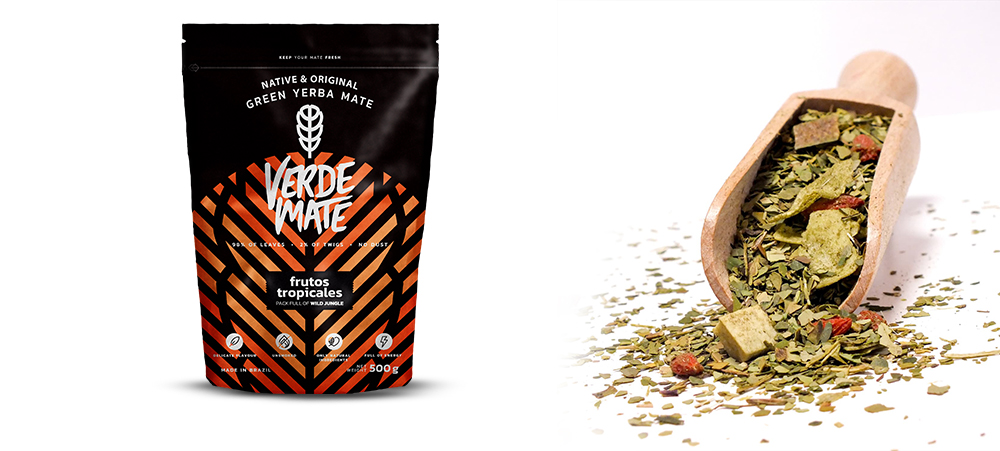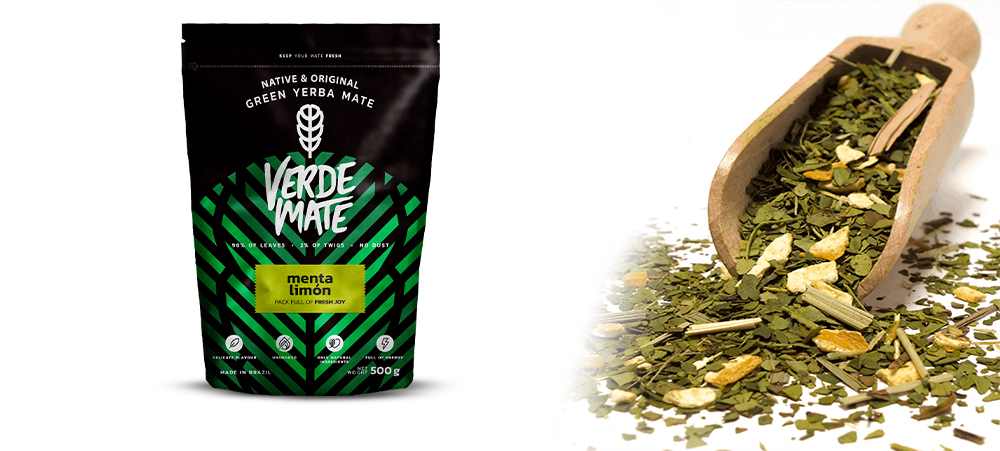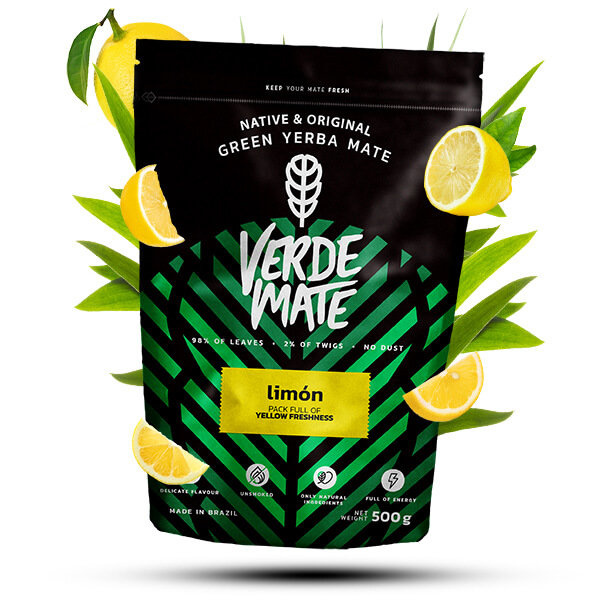Types and flavours of yerba mate

Elaborada, despalada, saborizada, tostada and others... Apparently one yerba mate, but there are millions of versions. What are the differences between the various types of yerba mate and what do the exotic-sounding terms on the packaging mean? What does yerba mate from Brazil taste like, and what does it taste like from Paraguay? What are the best flavours of yerba mate? Let us explain!
Summary:
- Despalada or elaborada?
- Different flavours of yerba mate – what do you find in a packet?
- Different types of yerba mate depending on the production method
- Every country has a different yerba mate
Despalada or elaborada?
The yerba mate market is huge. This is evidenced, for example, by the wide range of products on offer in our shop, where you can find products from some of the best-known brands as well as from more niche ones. New brands and designs are constantly being created, with new ideas and fresh approaches to the subject. Although each product is slightly different from one another, they all have one thing in common – the basis is a dry product that comes from a single plant, Ilex paraguariensis. Depending on the method of production, the country of origin or the additives that complement the pure dried product in the packet, there are many types of yerba mate, which, in the simplest terms, can be divided into despalada and elaborada. The difference lies in the ratio of the number of leaves to sticks in the packet. Yerba mate despalada contains 90% leaves and a maximum of 10% sticks, while elaborada can contain up to 35% sticks. These limits are precisely defined by the Argentine organisation INYM – the National Institute of Yerba Mate. Why is this so important? Seemingly insignificant leaves and twigs differ in their caffeine content. While there is quite a lot of caffeine in the leaves, the twigs are practically devoid of it, which is why they are considered more of a “filler” and mate with a lot of sticks is considered to have a weaker effect. A yerba mate that is completely devoid of sticks is called sin palo, while a dry product with a high proportion of twigs is called con palo.
Different flavours of yerba mate – what do you find in a packet?
Dust
Leaves and wigs are one thing. In some types of yerba mate you will also find dust. Some people say it is in the dust that the real power lies. The dust of yerba mate is considered to be more intense in flavour and aroma and more powerful in its effects. The dust gives the brew a distinct and strong flavour. Highly dusty yerba mate is typical of Paraguay, while products that contain little or almost no dust are sometimes labelled with the word "con bajo contenido de polvo" on the packaging.

Additives
Yerba mate, despite its intense taste, which usually has a characteristic bitterness, combines well with a variety of additives, preferably natural, just like mate itself. Herbs, fruit in all its forms, edible flowers or spices that can be found in the kitchen on a daily basis go perfectly with it. The additives soften the taste of the yerba mate somewhat, creating unique compositions full of flavour and aroma that attract and encourage you to try it. Flavoured yerba mates, enriched with additives, are usually labelled compuesta (in Spanish) or composto (in Portuguese), which means “composition, blend”. Almost every brand of yerba mate offers compositions enriched with additives, in addition to the classic products. The most popular and considered by many to be the best mild combination of yerba mate flavours is “menta limon”, a blend of mint and lemon. Another equally popular and one of the best mate tea flavours is the combination with stimulating guarana. Many producers outdo each other in inventing original flavour combinations. Two Brazilian brands – Verde Mate Green and Yaguar – lead the way among flavoured yerba mates in our shop, and our most recommended yerba mate flavours are: Verde Mate Green Frutos Tropicales, Verde Mate Green Más IQ, Yaguar Energía Guaraná and Yaguar Frutas Dulces.
Aromas
Nobody likes artificial colours or flavours. We tend to associate them with unhealthy foods. Knowing that they are in the product we want to buy, we look for alternatives – free of aromas and colours. Unfortunately, we very often encounter them on a daily basis. Apart from fruit or herbal additives, yerba mate producers also add fruit extracts, oils or flavourings to their products, and flavoured mate is referred to by the Spanish word saborizada. Unfortunately, manufacturers rarely provide information about the exact content of the aromatics. To avoid buying yerba mate with artificial flavours, pay attention to the descriptions. If you find the word “aroma” or the phrase “aroma identical to natural”, you should think twice about buying such a product. This means that it has artificial flavourings. These types of yerba mate have very intense aromas. Yerba mate that has a lot of fruit or herbs in its composition, but is devoid of artificial aromas, is not as intense in smell or taste.

Different types of yerba mate depending on the production method
The different flavours of yerba mate are influenced not only by the additives that go into the packet along with the dry product, but also by the production method of the yerba mate itself. Traditionally, yerba mate is dried using smoke from a roasting hearth and seasoned for several months, resulting in an intense, distinctive flavour with smoky notes. Examples are yerba mate from Paraguay (e.g. yerba mate Pajarito) or Argentina (e.g. yerba mate Rio Parana). This intensity is not to everyone's liking, which is why some producers have departed from tradition and made some improvements to their production, allowing leaves of Ilex paraguariensis to be dried with hot air instead of smoke. Such dried yerba mate is given the notation sin humo, or in Spanish, “without smoke”, on the packaging. One of the best types of air-dried yerba mate is the organic Soul Mate from Brazil, and a variation enriched with the addition of guayusa – Soul Mate Orgánica Guayusa – particularly appealed to our tastes. Among the products of some brands, you can also find a certain unusual type of yerba mate, with the addition of tostada – this is “roasted” yerba. The green leaves of Ilex paraguariensis become dark brown when roasted and the yerba mate acquires completely new flavour notes. The tostada is reminiscent of cereal coffee or cocoa and tastes even better when drenched in milk rather than water. We personally recommend Verde Mate Green Dulcessa enriched with the addition of chocolate, coconut flakes and almonds. Yummy!
Every country has a different yerba mate
The final factor that influences the diversity of yerba mate flavours is the country of origin. Although all inhabitants of “yerba mate countries” drink the same thing – an infusion made from the leaves of Ilex paraguariensis – each type of yerba mate, depending on its origin, differs slightly.
Argentinian yerba mate
Argentina that is the leader in the production and export of yerba mate. The country is home to some of the largest yerba mate producers who have made a name for themselves around the world. Typical Argentine yerba mate is characterised by a relatively low amount of dust and stick content – up to about 30%. It is most often produced using the traditional method, by brief exposure over the flames of a fire. It is sometimes additionally smoked and is usually subjected to long ageing.

Brazilian yerba mate
Just behind Argentina, in the ranking of production and exports, is Brazil. It is the largest country in South America and is characterised by great diversity. Interestingly, yerba mate is popular practically only in the south of the country. In the north of Brazil, coffee is the king. As diverse as Brazil is, so diverse are the preferences of Brazilian mate drinkers, which is why several types of yerba mate have emerged here. The most popular is chimarrão, which is yerba mate ground into a fine, flour-like powder. In the processing of this type of mate, the aging process is omitted, so that the dry product retains its juicy green colour. The taste and smell is reminiscent of fresh grass in a spring meadow. If dried with smoke from the campfire, it additionally has slightly smoky notes. It is very hot in Brazil, so Brazilians love to drink cold yerba mate – with ice-cold water or ice cubes. The cool, refreshing version of yerba mate is called tereré. This is also the name of the type of Brazilian mate, which is prepared during production in such a way that it tastes great cold. There is another type of mate tea from Brazil that has found particular favour with European lovers of the brew – mate green, or green yerba mate. Like chimarrão, the ageing stage is omitted in its production, so that the dry product retains its luscious green colour, and air drying instead of smoke contributes to a very mild flavour. However, what goes into the packet is not fine powder, but medium-cut leaves, usually without sticks.

Paraguayan yerba mate
In Paraguay, as in Brazil, the cold version of yerba mate is most preferably drunk. When drenched in ice-cold water, the dry product releases its valuable properties just as well as in hot water, but this happens a little slower and the flavour is a little less intense. This is why Paraguayan yerba mates are strong and expressive – produced according to tradition, i.e. by drying over a fire and using smoke. They are also usually highly dusty, which further contributes to their intensity.

Uruguayan yerba mate
Although Ilex paraguariensis also grows in Uruguay, yerba mate is not produced in this country for economic and business reasons. Despite this, Uruguayans outright love the green brew of the Guarani Indians! The vast majority of the products that are available on the Uruguayan yerba mate market come from Brazil, but the “Uruguayan-Brazilian” type of mate is very different from that drunk in the samba country. Uruguayan yerba mate is more intense in flavour, with a sense of bitterness, but not as intense as in the Paraguayan variety. In addition to the leaves, the packet contains twigs and a fair amount of dust.

The types of yerba mate are plentiful. Everyone is sure to find something for themselves. The best way to find out about their amazing effects is to experience them for yourself. It is hard to describe their extraordinary taste, aroma and effects. To find your taste, it is a good idea to try different versions. From milder to strong. From flavoursome to dusty. Enjoy!
Source of information:
- Wikipedia: Yerba mate.
- oec.world.






